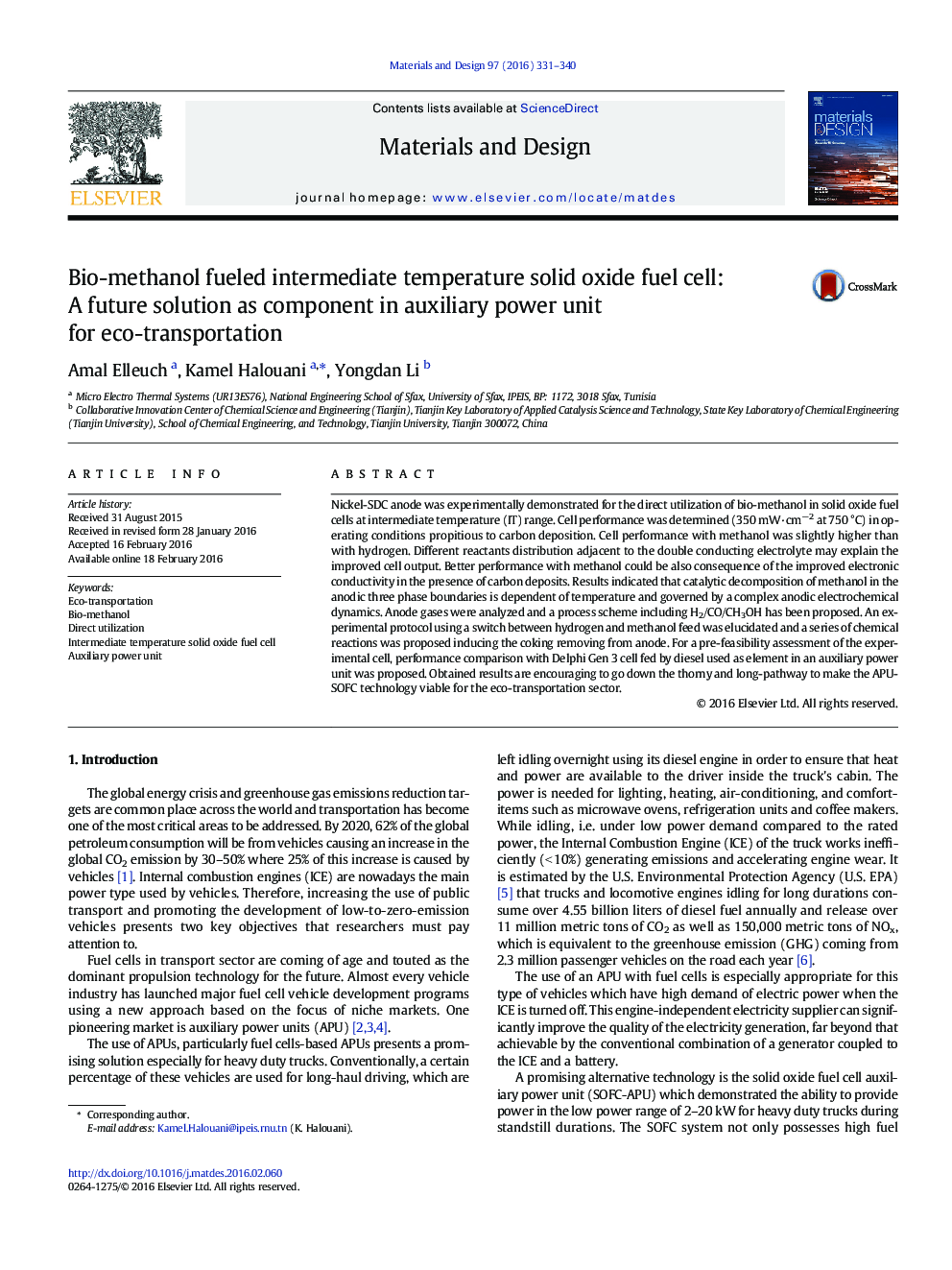| Article ID | Journal | Published Year | Pages | File Type |
|---|---|---|---|---|
| 828083 | Materials & Design | 2016 | 10 Pages |
•Direct use of methanol fuel in intermediate temperature Solid oxide fuel cell shows comparable cell output to Delphi cell.•Methanol oxidation reactions with proton/oxide dual conductors in samarium-doped ceria composite electrolyte were proposed.•Chemical mechanisms permitting to remove carbon deposition were investigated in Nickel-samarium-doped ceria anode.
Nickel-SDC anode was experimentally demonstrated for the direct utilization of bio-methanol in solid oxide fuel cells at intermediate temperature (IT) range. Cell performance was determined (350 mW·cm−2 at 750 °C) in operating conditions propitious to carbon deposition. Cell performance with methanol was slightly higher than with hydrogen. Different reactants distribution adjacent to the double conducting electrolyte may explain the improved cell output. Better performance with methanol could be also consequence of the improved electronic conductivity in the presence of carbon deposits. Results indicated that catalytic decomposition of methanol in the anodic three phase boundaries is dependent of temperature and governed by a complex anodic electrochemical dynamics. Anode gases were analyzed and a process scheme including H2/CO/CH3OH has been proposed. An experimental protocol using a switch between hydrogen and methanol feed was elucidated and a series of chemical reactions was proposed inducing the coking removing from anode. For a pre-feasibility assessment of the experimental cell, performance comparison with Delphi Gen 3 cell fed by diesel used as element in an auxiliary power unit was proposed. Obtained results are encouraging to go down the thorny and long-pathway to make the APU-SOFC technology viable for the eco-transportation sector.
Graphical abstractFigure optionsDownload full-size imageDownload as PowerPoint slide
